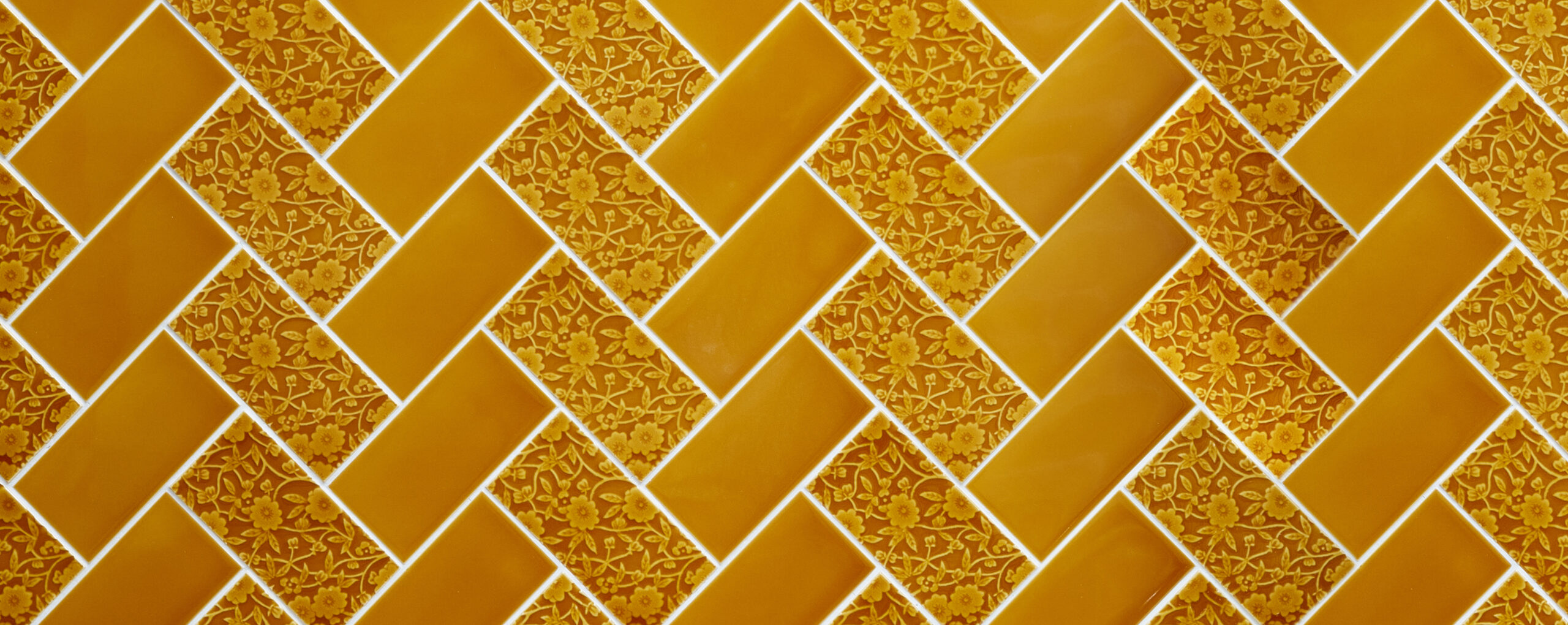Beautiful heritage tiles are storming the design world, and no one makes them like Craven Dunhill Jackfield, whose creations grace iconic buildings from Westminster to Williamsburg, and are sought after by designers like Martin Brudnizki. Effect Magazine’s Charlotte Metcalf discovers why we should heed what lies beneath
‘Generations have trod, have trod, have trod,’ wrote the great Gerard Manley Hopkins in his famous 1877 poem God’s Grandeur. This line came to mind as I talked to Simon Howells, managing director of Craven Dunnill Group, maker of exceptional encaustic and decorative tiles, about the Palace of Westminster. Howells was urging me to imagine how many famous, ministerial and royal pairs of feet have walked through the palace over the last century, treading daily the tiles in St. Stephen’s Hall, the Royal Gallery and Central Lobby.
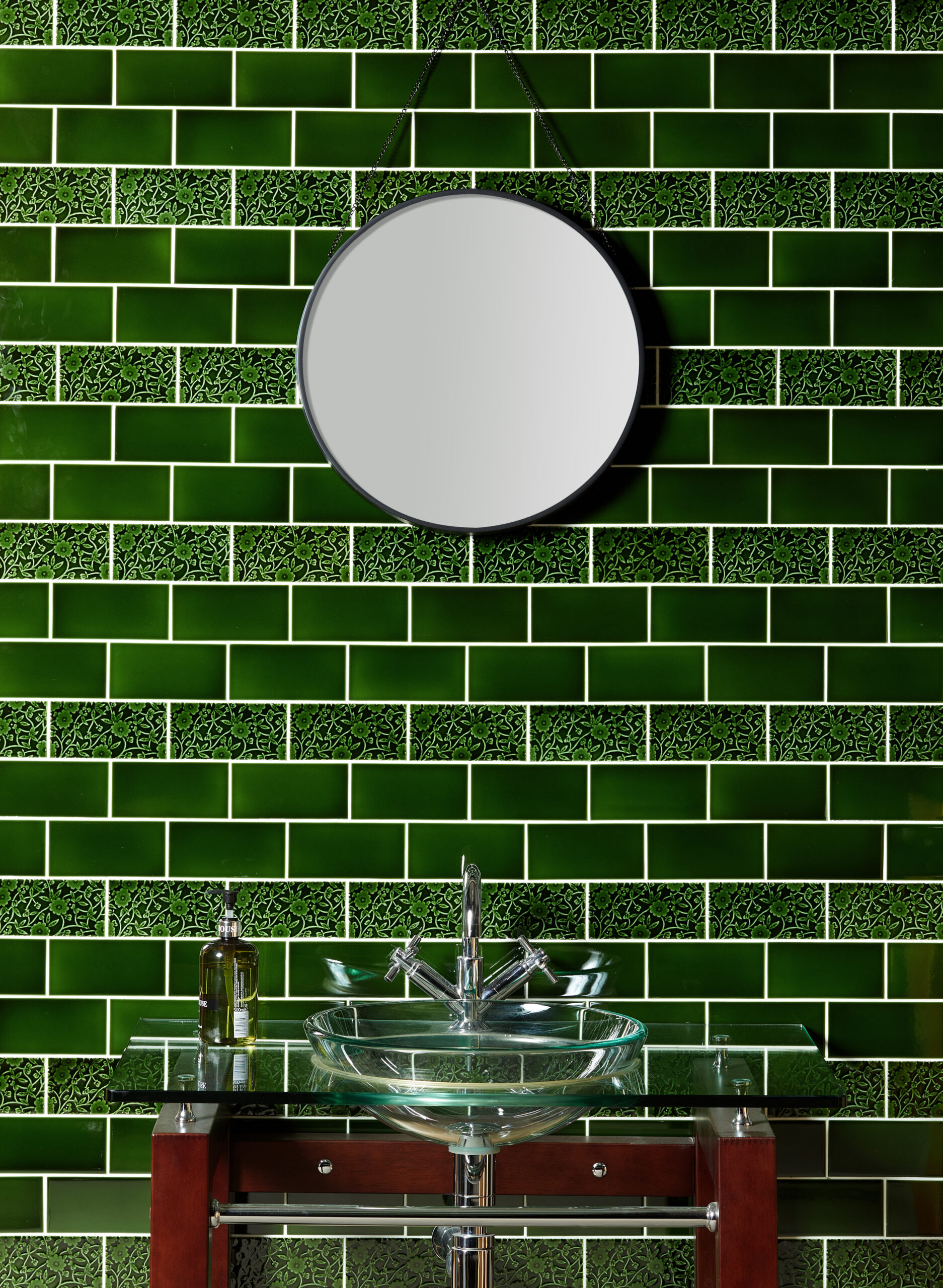
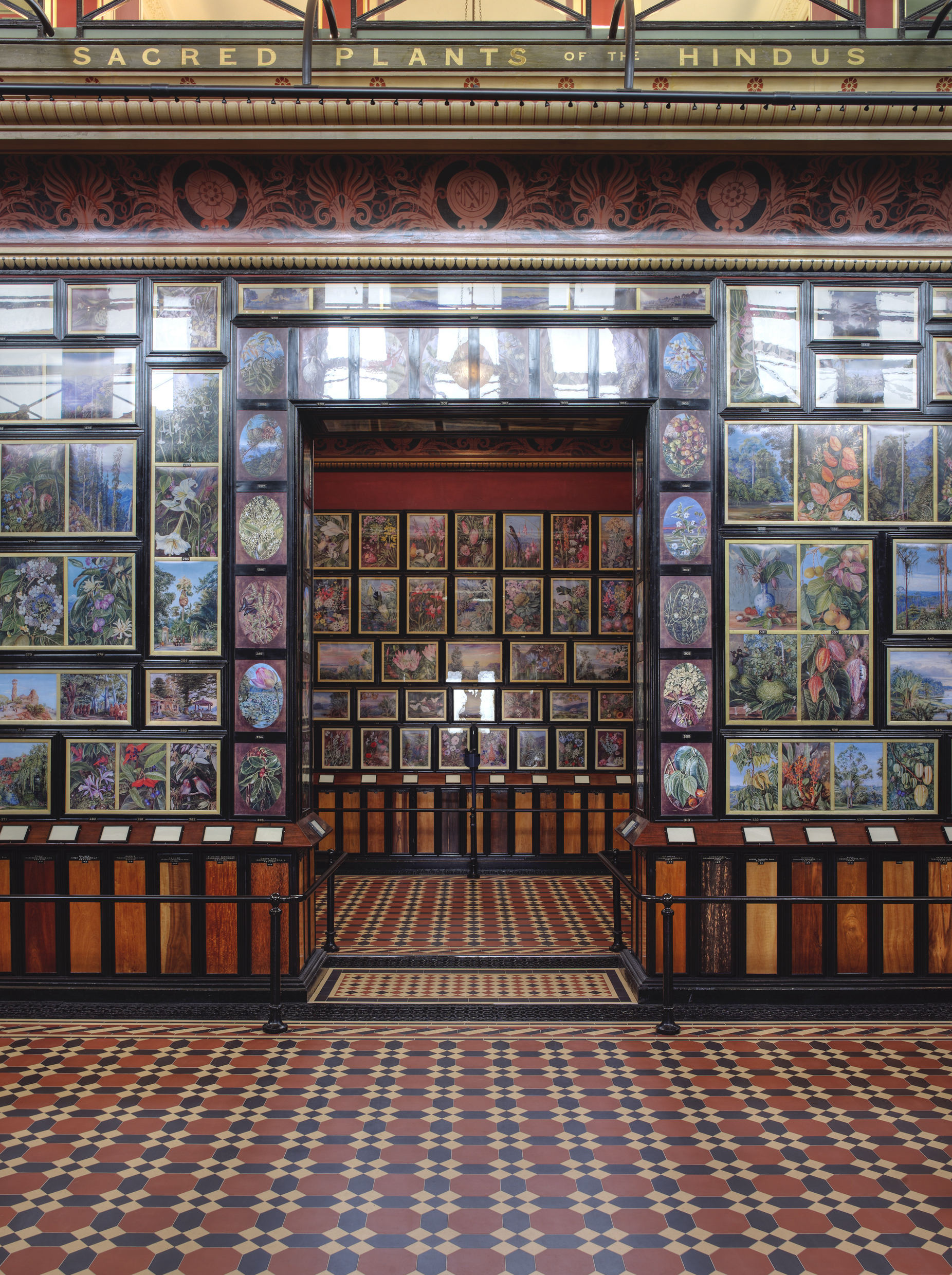
Craven Dunnill Jackfield (CDJ) has spent the last 14 years carefully removing and replacing 90% of those historic floor tiles, restoring the hallowed Westminster halls to their former glory. “The roundel in Central Lobby’s central octagon alone contains 533 tiles,” says Howells, explaining the project’s vast scale. “Most tiles have straight edges for good reason, because we had to hand-carve every single curved mould. That alone took a year, and we have replaced around 40,000 tiles.”
As the only remaining traditional encaustic tile manufacturer in the world, CDJ was the obvious choice for a project of such historic importance. Its factory is situated in the Ironbridge Gorge, now a World Heritage Site and the birthplace of the Industrial Revolution. The factory, now part of the Ironbridge Gorge Museum Trust, dates all the way back to 1872, making it the world’s oldest surviving purpose-built tile factory.
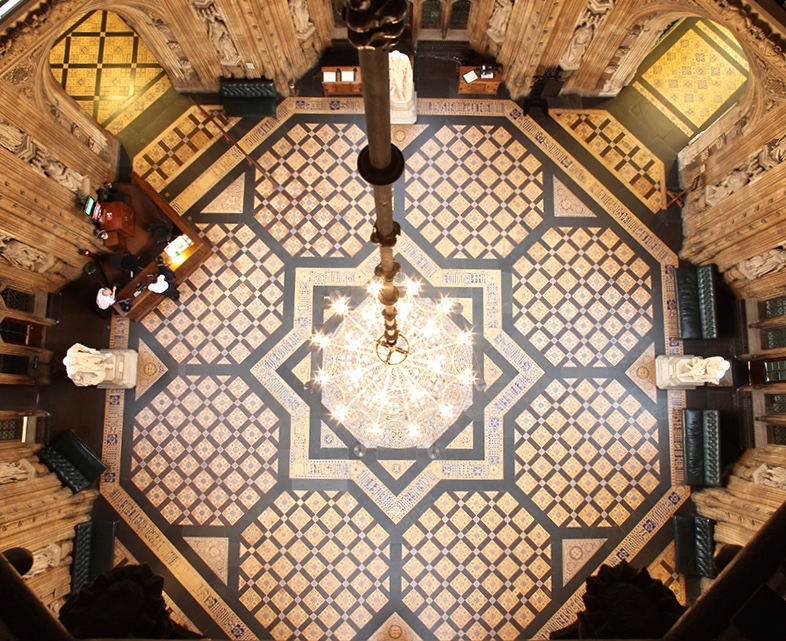
To describe Howells as an enthusiast is severely to underestimate the passion he displays for his craft. He’s the fifth generation of his family to work for Craven Dunnill and he describes his role as “shouldering full responsibility for the preservation of an endangered skill”.
We’ve seen a real uplift and a huge appetite for more authenticity and provenance, which our tiles represent. Every single tile has its own story to tell.
Simon Howells, MD of Craven Dunnill Group
“Tiles can be dismissed as merely functional, but I view our ceramics as transformational,” he says. “It can be a challenge to persuade 18-year-olds to get wet clay under their fingernails when they could be working in tech, but once we expose them to how beautiful tiles are, we persuade them. We host 7,500 local schoolkids a year at our factory workshops and work with the Princes Trust and QEST (Queen Elizabeth Scholarship Trust) to play a really active role in preserving the skills needed to carry on making encaustic tiles”’
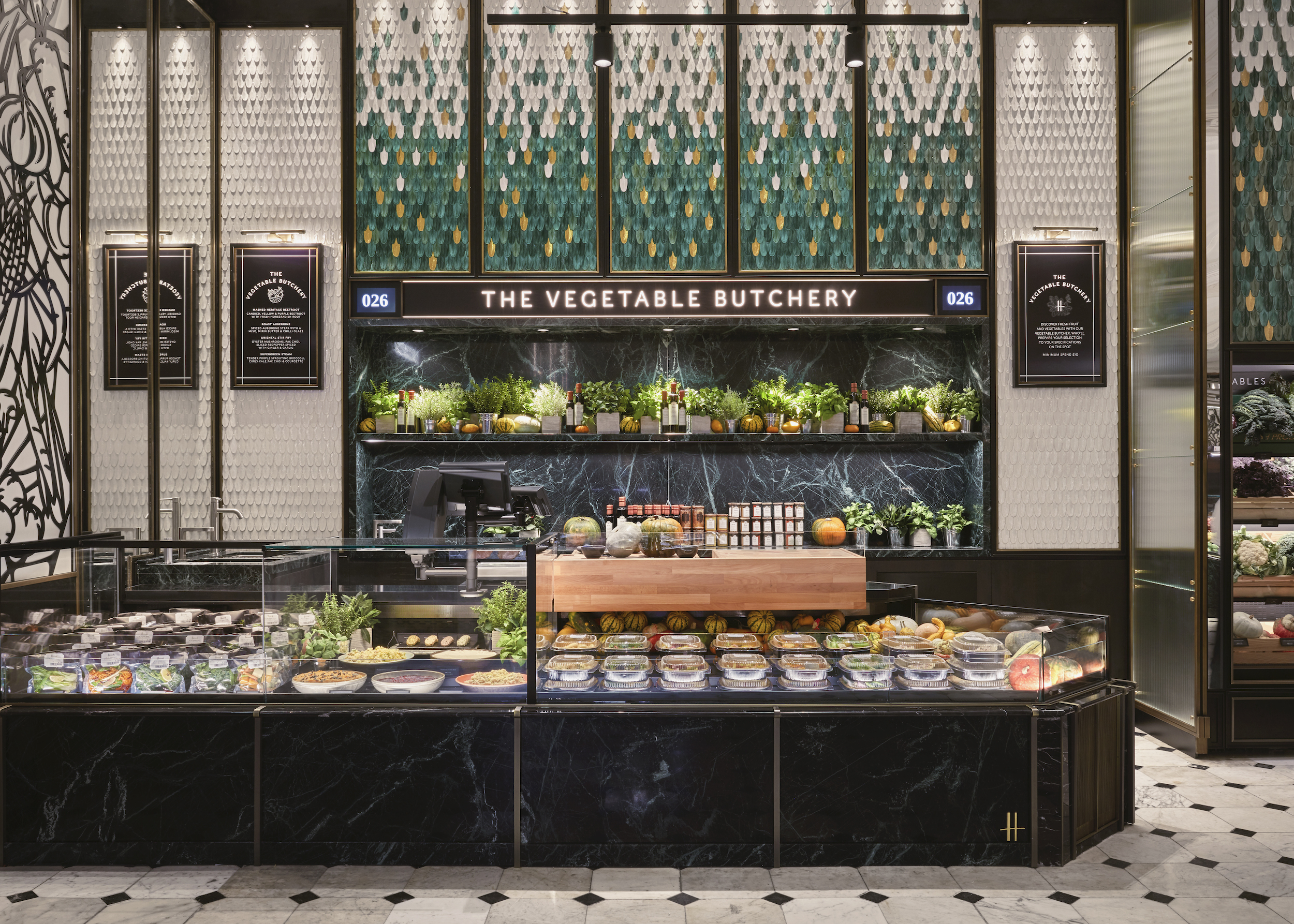
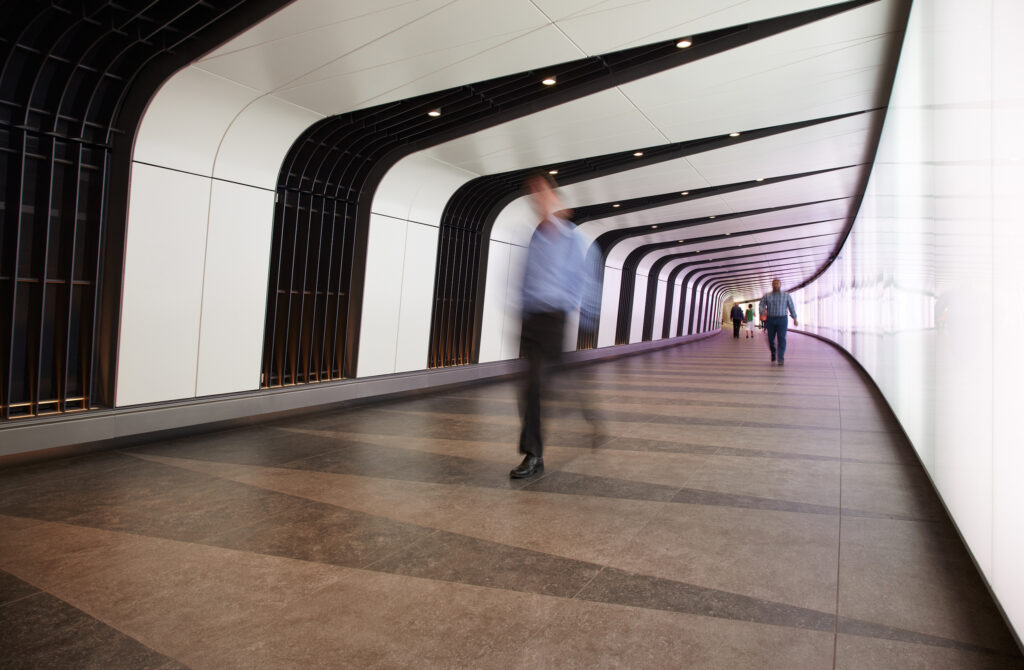
Ask Howells to describe exactly what their handcrafted tiles are like, and he’s off, convincing me of their show-stopping beauty. “They act more like stained glass because our specialist glazes are translucent and give real depth to the tiles. The light bounces in and out of them and you want to touch them. Only handmade tiles like ours create that true graduation of colour which gives a sense of movement on walls. They’re so beautiful and tactile, and I can’t help stroking them when I see them – and I’m always mocked for it!” he laughs.
Underfoot, a standard glazed floor tile will wear away through heavy foot traffic, whereas an encaustic floor tile is inlaid and tends to be much thicker. The pattern is not in the glaze but made from coloured clays poured into a mould to reveal a design that sets, and then endures for a century or so.
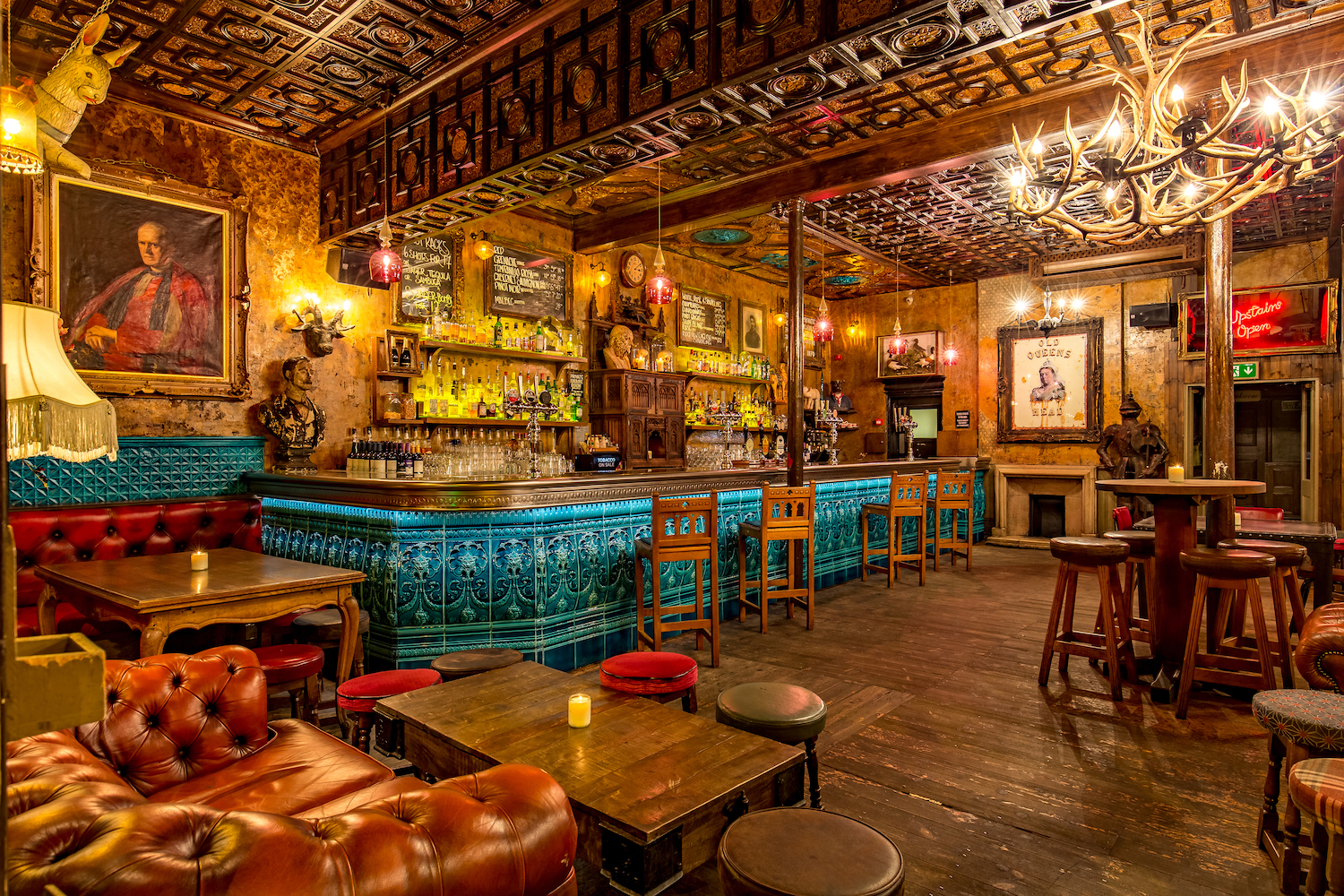
Should you suggest that there is a limited demand for such a rare, labour-intensive ceramic, Howells is quick to contradict. “In recent years we’ve seen a real uplift,” he insists, “and a huge appetite for more authenticity and provenance, which our tiles represent. Every single tile has its own story to tell, and you can even see finger marks on the side, indicating that hand-made integrity that people crave. People have had far too much fast production, fast food, fast fashion and so on and now there’s a move away from conveyor products and yearning for inherently timeless ones like ours. Besides, since Covid, people have looked to transform and decorate their spaces and they like the idea of creating a genuine piece of history. Use a fake alternative and you see through it straight away. Investing in real craftsmanship is really worthwhile over time, and now designers, specialist architects and homeowners are flocking to us from all over the world to create what I call ‘talkability within their space’.”


It doesn’t get much more prestigious than the Palace of Westminster, but one glance at CDJ’s clients is enough to dispel any lingering doubts about how integral beautiful decorative tiles are to so many grand, ambitious designs. CDJ tiles grace numerous majestic interiors from London’s Garrick Club, Leeds Library, St. Mary’s Cathedral, Oldham Town Hall, Williamsburg Savings Bank in New York, Parliament House in Melbourne, Keble College, Oxford and Kew Gardens, to Jamie Oliver’s restaurants, Harrods Food Halls and the London Underground, demonstrating their versatility and range.
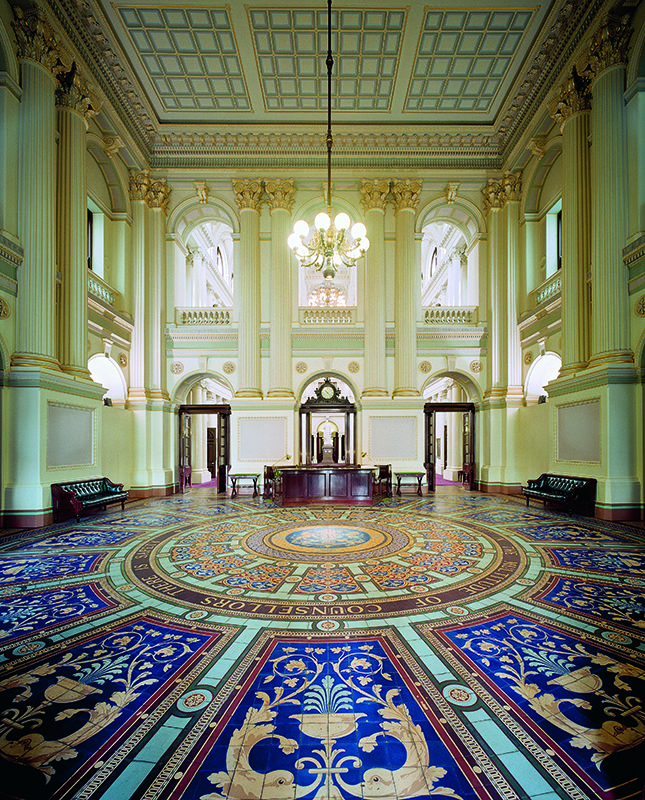
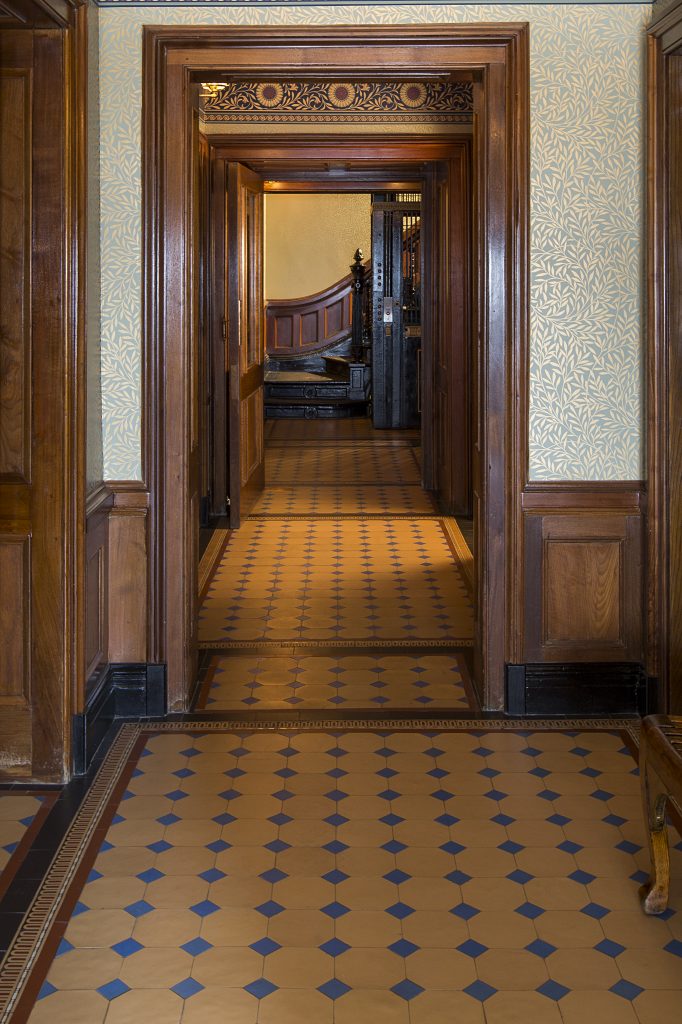
In the Kings Cross pedestrian tunnel , CDJ’s tiles are in a sleek contemporary monochromatic pattern, more Star Trek than Transport for London. Increasingly, the firm is being sought out to apply traditional techniques to cutting edge contemporary design. CDJ tiles are also sought out by top designers like Martin Brudnizki, David Collins, Bryan O’Sullivan and Adam Nathaniel Furman. Recently, CDJ worked with acclaimed artist Brian Clarke on the stunning nature-inspired tiled interior of Beaverbrook’s Coach House Spa in Surrey. CDJ is also about to embark on decorating a hotel in Montevideo, yet to be formally announced.
This year Craven Dunnill Jackfield turns 150. To celebrate, it partnered with Burleigh Pottery, which Howells describes as an “equally craft-minded brand” celebrating its own 170th birthday. CDJ took Burleigh’s beloved calico pattern, which graces much of its dinnerware, and reimagined it in 3D, creating a series of hand-made reliefs in spectacular unique colours. The result was two collections: the Calico Collection, comprising tiles for the home, and the Calico Deluxe Range, containing huge ceramic artwork pieces – weighty 3D tiles up to a third of a metre in size. These are now on display at Craven Dunnill’s showroom and already being used to spectacular effect in a variety of installations.
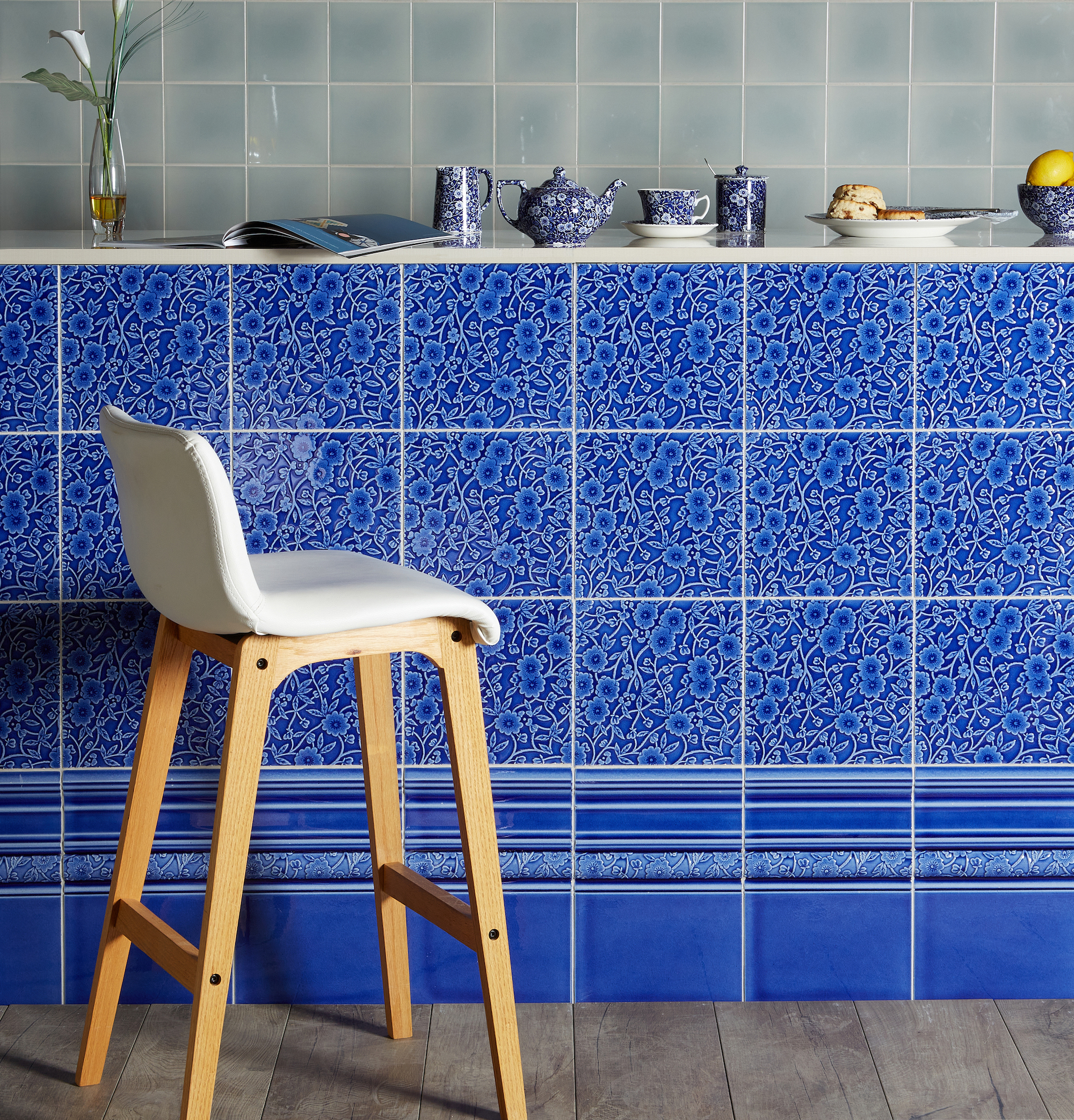

Since talking to Howells, I’ve started noticing tiles everywhere, cheering up dingy, cement doorsteps, investing halls with welcoming grandeur, adding lustre to dados and walls, enlivening kitchens and bathrooms with fun and colour, giving character to our underground stations and investing restaurant and pub interiors with theatrical glamour – just take a look at the CDJ-tiled bars in the Old Queens’ Head in Islington, or Blues Kitchens in Shoreditch and Brixton. “We’ve been around a very long time,” Howells reminds me, “and once you start noticing how beautiful our tiles are, you’ll see them everywhere. We don’t need to crow because most of our work comes from word-of-mouth. Once people work with us, they’re with us forever. They see what fun it is discovering the potential of what handmade encaustic and decorative tiles can achieve – and nothing else does it like them. We’re here to stay another 150 years at least.”
Effect Magazine is brought to you by Effetto



